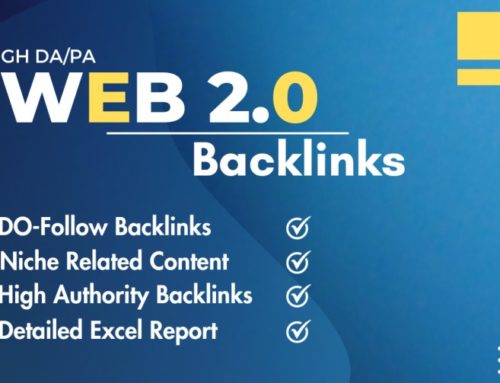In the labyrinth of search engine optimization (SEO), backlinks stand tall as the pillars of a website’s authority and visibility. A a business navigating this complex landscape, it’s imperative to grasp the intricacies between different types of backlinks, particularly the distinction between dofollow and nofollow links. In this expansive guide, we embark on an in-depth journey into the world of backlinks, unraveling the essence of dofollow and nofollow links, their profound impact on SEO, and how adeptly leveraging them can propel your website’s search engine rankings to new heights.
Decoding the SEO Puzzle: A Comprehensive Exploration of Dofollow and Nofollow Backlinks
Introduction to Backlinks
At the heart of SEO lies the concept of backlinks, also known as inbound links or external links. These hyperlinks serve as pathways, guiding users from one webpage to another. From an SEO perspective, backlinks are akin to votes of confidence, signaling to search engine algorithms the trustworthiness and relevance of a website. Understanding the role of backlinks is fundamental to mastering the art of SEO.
Dofollow Backlinks
Dofollow links are the backbone of SEO strategy, serving as endorsements from one website to another. When a website includes a hyperlink to another site without using the rel=”nofollow” attribute, it’s essentially passing on valuable link equity or “link juice” to the linked page. This link equity acts as a vote of confidence in the eyes of search engines, signaling that the linked content is reputable, relevant, and worthy of acknowledgment.
Key characteristics of dofollow links include:
- Authority Transfer: Dofollow links facilitate the transfer of authority from the linking site to the linked page, thereby enhancing the latter’s search engine rankings. These links contribute directly to a website’s SEO efforts by bolstering its credibility and authority within its niche or industry.
- Crawlability: Search engine crawlers follow dofollow links to discover and index linked pages, thereby increasing their visibility in search engine results pages (SERPs). By crawling and indexing linked content, search engines can better understand its relevance and context, ultimately influencing its ranking position.
- SEO Impact: Dofollow links are instrumental in improving a website’s organic search visibility and traffic. They signal to search engines that other reputable websites vouch for the linked content, thereby enhancing its trustworthiness and authority. As a result, websites with a robust portfolio of high-quality dofollow backlinks are likely to rank higher in SERPs for relevant search queries.
In HTML, the link would simply look like:
a href=”https://somesite.com/”>My Link</a>
Nofollow Backlinks
Nofollow links, marked with the rel=”nofollow” attribute, operate on a different premise compared to dofollow links. When a website includes a hyperlink with the nofollow attribute, it essentially instructs search engine crawlers not to follow or pass any authority to the linked page. While these links may still contribute to referral traffic and user engagement, they do not directly impact SEO rankings.
Key characteristics of nofollow links include:
- Authority Blocking: Unlike dofollow links, nofollow links do not transfer authority or link equity to the linked page. Search engine crawlers recognize the rel=”nofollow” attribute and abstain from considering these links concerning ranking calculations. As a result, nofollow links do not contribute to a website’s SEO efforts in the same manner as dofollow links.
- Crawlability: While search engine crawlers still recognize and follow nofollow links, they do not attribute any authority to the linked content. Instead, these links are primarily used to direct users to relevant resources without influencing search engine rankings. Nofollow links may still contribute to the overall crawlability of a website by facilitating the discovery of linked pages.
- SEO Impact: Nofollow links may not directly impact SEO rankings, but they can still play a role in enhancing user experience and driving referral traffic. Websites may utilize nofollow links for various purposes, including editorial discretion, user-generated content, and sponsored content, without risking potential penalties from search engines for unnatural linking practices.
In HTML, the link would look like:
<a href=”https://mysite.com/” rel=”nofollow”>My Link</a>
Dofollow vs. Nofollow: Key Differences
There are differences between these types of links, and both types are important for SEO. The key differences between dofollow and nofollow links lie in their ability to transfer authority, influence search engine rankings, and impact SEO efforts. Dofollow links serve as endorsements that bolster a website’s credibility and authority, while nofollow links do not pass any authority and primarily serve to direct users to relevant resources. By understanding these distinctions and leveraging both types of links strategically, SEO practitioners can optimize their backlink profiles to enhance their website’s visibility and rankings in search engine results.
- Link Equity Transmission: Dofollow links facilitate the transfer of link equity, bolstering a website’s SEO rankings, while nofollow links abstain from passing any authority.
- Crawlability: Dofollow links are crawled and indexed by search engine spiders, contributing to the discovery and indexing of linked pages, whereas nofollow links are crawled but disregarded concerning authority transfer.
- User Experience vs. SEO: While dofollow links serve as a cornerstone of SEO strategy, nofollow links can still enrich user experience by directing users to relevant resources without directly impacting SEO rankings.
The SEO Dynamics of Dofollow and Nofollow Links
Dofollow links wield considerable influence over a website’s search engine rankings and authority. They serve as endorsements from authoritative sources, signaling to search engines the relevance and trustworthiness of the linked content. In contrast, while nofollow links may not directly impact SEO rankings, they can still contribute to referral traffic and brand visibility, thus playing a supplementary role in the broader SEO ecosystem.
Harnessing the Power of Dofollow and Nofollow Backlinks Strategically
Incorporating both dofollow and nofollow links into your SEO strategy offers a well-rounded approach that can yield numerous benefits. Here’s why you should utilize both types of links:
Diversification of Link Profile
By incorporating both dofollow and nofollow links, you create a diverse and natural-looking backlink profile. This diversity signals to search engines that your website’s link profile is organic and not manipulated solely for SEO purposes, reducing the risk of penalties for unnatural linking practices.
Enhanced User Experience
Nofollow links can still drive valuable referral traffic and enhance user experience by directing users to relevant resources, even though they do not directly impact SEO rankings. By including these links, you provide users with additional avenues to explore related content, improving engagement and satisfaction.
Mitigation of Risk
Relying solely on dofollow links for SEO purposes can carry inherent risks, such as over-optimization or reliance on potentially volatile ranking factors. Integrating a mix of dofollow and nofollow links mitigates these risks by diversifying your website’s link profile and reducing dependence on any single type of link.
Editorial Control and Relevance
Nofollow links offer webmasters greater editorial control over the links they endorse, allowing them to maintain relevance and authenticity within their content. By strategically incorporating nofollow links to reputable sources or sponsored content, you can enhance the credibility and trustworthiness of your website.
Compliance with Guidelines
Utilizing both dofollow and nofollow links aligns with industry best practices and search engine guidelines. It demonstrates a commitment to ethical SEO practices and compliance with search engine algorithms, reducing the likelihood of penalties or algorithmic changes negatively impacting your website’s rankings.
Long-term Sustainability
A balanced approach to link building, encompassing both dofollow and nofollow links, fosters long-term sustainability in your SEO efforts. It creates a robust foundation that withstands algorithm updates and shifts in search engine preferences, ensuring consistent visibility and performance in search results over time.
Maximizing Opportunities for Link Acquisition
Incorporating both types of links expands your pool of potential linking opportunities. While some websites may only offer dofollow links for SEO purposes, others may provide nofollow links for guest contributions, sponsored content, or social media mentions. By leveraging both types of links, you can maximize your chances of acquiring valuable backlinks from diverse sources.
Final thoughts on Dofollow and Nofollow backlinks
Using both dofollow and nofollow links in your SEO strategy fosters a holistic approach that prioritizes diversity, user experience, risk mitigation, compliance, sustainability, and opportunity maximization. By striking a balance between these two types of links, you can optimize your website’s visibility, authority, and rankings in search engine results while minimizing potential drawbacks and risks.
Mastering the intricacies of dofollow and nofollow backlinks is pivotal for any SEO practitioner seeking to navigate the ever-evolving landscape of search engine optimization. By understanding the nuanced differences between these link types and employing strategic backlinking tactics, you can elevate your website’s authority, visibility, and search engine rankings, driving sustainable growth and success in the digital arena.
Getbacklinks offers a premium local SEO service that empowers businesses and blogs to manage online success. If you have inquiries, we’re here to assist. Don’t forget to explore our customized backlinks packages. Take action now to secure high-quality backlinks and witness your website’s monthly ranking enhancement. Your competitors will be surprised by the positive impact.



